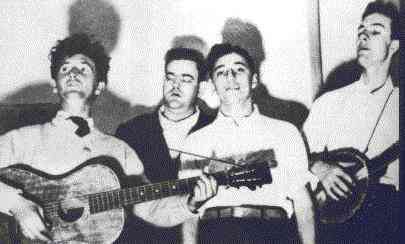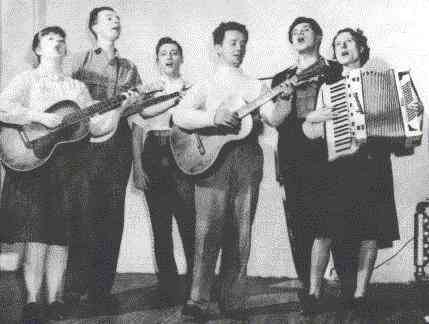THE SONGS OF THE ALMANAC SINGERS





Woody Guthrie Publications
250 West 57th Street, Suite 1218
New York, NY 11201
tel.: (212) 541-6230
fax: (212) 459-9035
email: THISLAND@aol.com


As Guthrie remarked, the Almanac Singers were "the only group that rehearsed on stage." Beyond the protean topicality of their repertoire, the class and ethnic traditions embodied in its members, the real meaning of the Almanacs lay in the social and musical space they opened for themselves in American popular music, the very space that the postwar revival would appropriate and enlarge. The Almanacs were incomparable. They were not pop singers, not ethnic singers, not quite hillbilly singers, though they would perhaps have been pleased to persuade some in their audience that they were. They did not perform in costume, either of the concert stage or of the radio barndance; and yet their street clothes, in which they ordinarily appeared, ranged from pieces of business suits in various permutations and combinations to dungarees, workshirts, and construction boots....The Almanacs were good. Through them young urban audiences were for the first time being exposed to the music with which the singers were familiar and which they could bring to the group -- blues, hillbilly, mountain music, Southern Methodist hymns. Guthrie's later participation only heightened this effect, while the accompaniment of Josh White's blues guitar on their Keynote recordings, alongside Seeger's eclectic banjo style that, with a combination of strumming and picking, evoked both jazz and frontier idioms, produced an ensemble sound not substantially different from, say, that of the Memphis Jug Band. One wonders what his audiences thought he was doing when in "C for Conscription," taking off on Jimmie Rodgers' "T for Texas," Seeger yodeled as forlornly as the Singing Brakeman himself....
The Almanacs brought to their performances what Michael Rogin calls the "alternative, polyglot world" of New York's entertainment culture, "in which the children of Jewish immigrants found new cosmopolitan identities among Jews, other immigrants, children of old-stock Americans... and African-Americans as well."








